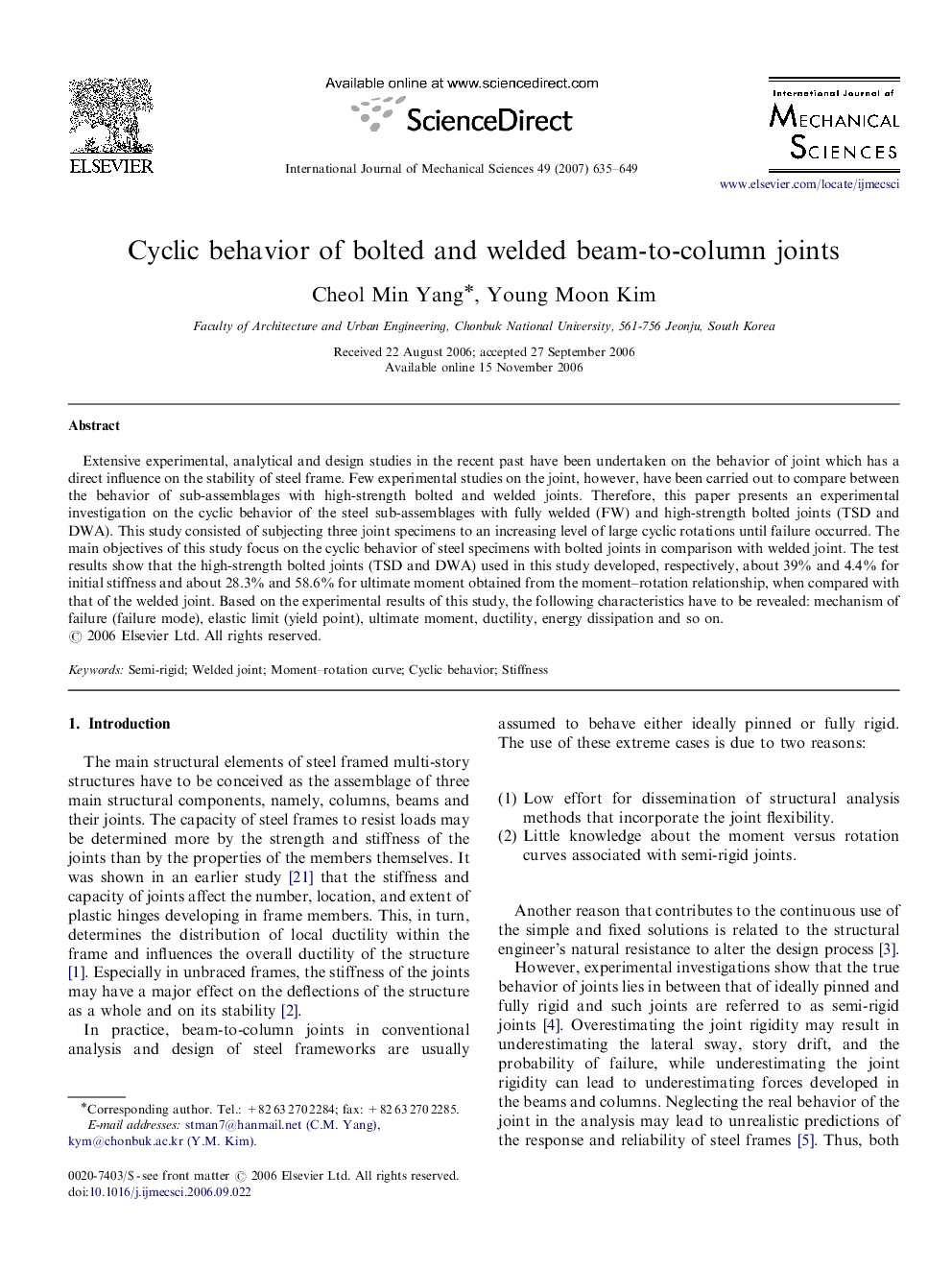| Article ID | Journal | Published Year | Pages | File Type |
|---|---|---|---|---|
| 782880 | International Journal of Mechanical Sciences | 2007 | 15 Pages |
Extensive experimental, analytical and design studies in the recent past have been undertaken on the behavior of joint which has a direct influence on the stability of steel frame. Few experimental studies on the joint, however, have been carried out to compare between the behavior of sub-assemblages with high-strength bolted and welded joints. Therefore, this paper presents an experimental investigation on the cyclic behavior of the steel sub-assemblages with fully welded (FW) and high-strength bolted joints (TSD and DWA). This study consisted of subjecting three joint specimens to an increasing level of large cyclic rotations until failure occurred. The main objectives of this study focus on the cyclic behavior of steel specimens with bolted joints in comparison with welded joint. The test results show that the high-strength bolted joints (TSD and DWA) used in this study developed, respectively, about 39% and 4.4% for initial stiffness and about 28.3% and 58.6% for ultimate moment obtained from the moment–rotation relationship, when compared with that of the welded joint. Based on the experimental results of this study, the following characteristics have to be revealed: mechanism of failure (failure mode), elastic limit (yield point), ultimate moment, ductility, energy dissipation and so on.
